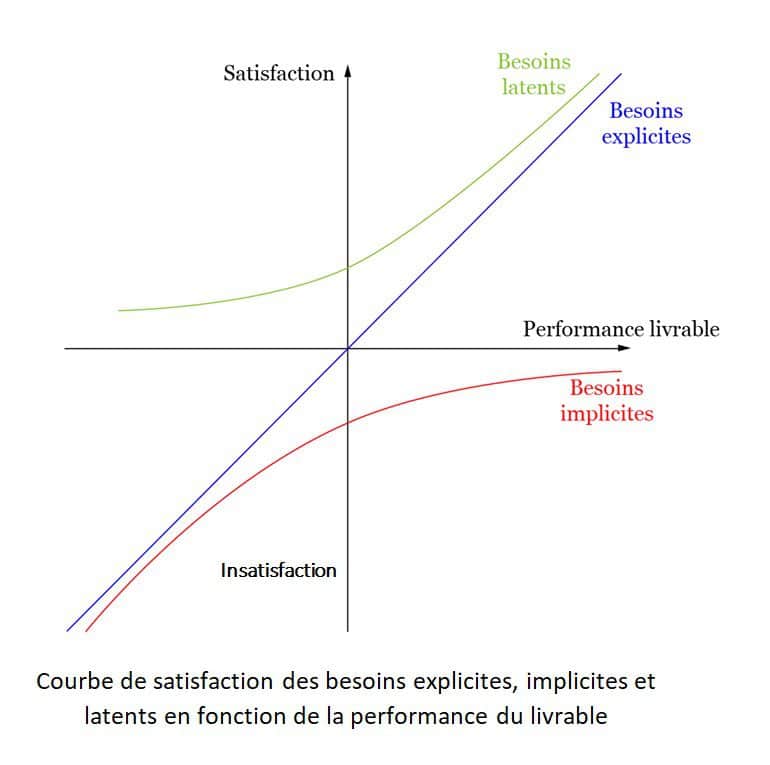The aim of any project is to meet a need. Its success depends on whether the proposed response matches that need. This requires the need to be correctly expressed, understood and transcribed. And that's no easy task! IT project manager and trainer Cédric Allène explains how to achieve this.

Gathering the requirements is one of the first stages of the pre-project phase. It can be the subject of an independent sub-project leading to the delivery of a document detailing the requirement. This document can then be used to propose one or more responses, together with their costings (timescales and resources required to achieve them), or be circulated in a call for tenders. Its completeness and accuracy are therefore crucial.
In the remainder of this article, even though we will see that, except in trivial cases, the collection of needs must be the subject of a two-way exchange, we will refer to the "speaker" as the individual(s) responsible for expressing the need and the "listener" as the individual(s) responsible for collecting and formalising it.
The different types of need
The needs fall into 3 categories:
- Explicit needs
These are the needs that are clearly expressed by the speaker or the specifications. However, they are not necessarily exhaustive or clear and may not represent real needs.
In a bar, ordering a coffee is the expression of an explicit need.
- Implicit needs
These are needs that are not expressed by the speaker, because he takes them for granted. The speaker doesn't even think about wasting time mentioning them.
With a few exceptions, the coffee ordered is implied to be served in the form of a hot liquid from a percolator, not a filter coffee maker. This is an implicit need linked to the context of the bar and our culture.
- Latent needs
These are needs that are not expressed by the speaker, because they are not aware of them. These needs are not always essential, but they can be a lever for adding value.
The coffee ordered is often accompanied by a sugar cube and, possibly, a biscuit or a piece of chocolate. These are responses to latent needs.
Treat each type of need
Theorised by Noriaki Kano in 1984, the Kano model highlights the impact on final satisfaction depending on the response to each type of need (see illustration).

The more explicit needs are met, the greater the level of satisfaction. But implicit needs must not be neglected: their absence from the final deliverable leads to dissatisfaction.
Conversely, failure to take account of a latent need has no impact because the speaker is unaware of its existence. Identifying this type of need highlights the auditor's knowledge of the project context. Responding to it effectively will build customer loyalty. But once customer loyalty has been established, the latent need may be transformed into an implicit need that needs to be satisfied.
You'd probably be disappointed if the bar where you're used to getting a biscuit or a square of chocolate with your coffee stopped adding it.
Clearly, making implicit and latent needs explicit is essential.
No need for a solution
During the collection of the need, it is not uncommon for the speaker to express the solution that he feels ideally meets the need rather than the need itself. The listener could then simply formalise it. However, the real value of the auditor lies in identifying the real need and checking, either by the auditor or a third party, that the solution suggested by the speaker matches the identified need. This approach does not lend itself to all contexts and may be rejected by the speaker.
It's hard to imagine that a barman who has just ordered a coffee would ask about his customer's level of dehydration and tiredness to ensure that a stimulating drink like coffee is what's best for him.
Listening... and above all sharing
Given that the explicit need is only partially covered in relation to the real need, if the listener simply transcribes the elements expressed by the speaker, the project is likely to fail. The auditor therefore has a duty to guide the collection of requirements.
To this end, the listener must question and challenge the speaker's words in a sympathetic way to ensure exhaustive coverage of the subject. This is a potentially lengthy process and may require patience on both sides. However, it is essential to take the necessary time to ensure that the project has a solid foundation.
The choice of interlocutors
Gathering needs exhaustively and effectively is essentially a question of know-how and interpersonal skills. However, this does not guarantee results. There are other factors to take into account.
- For the listener :
Knowing the context of the project is a real advantage. Provided that the auditor knows how to stand back and not confuse it with a more or less similar need, thereby running the risk of leaving out certain specific elements. This knowledge of the context will enable them to put the jigsaw together more quickly and easily identify implicit or latent needs. However, it is not essential if the customer has the capacity to assimilate this context during the process of identifying the need. The disadvantage is that the exercise takes longer to learn. If time allows, it is still preferable to choose an auditor who does not know the context, but who has the required interpersonal skills, rather than the other way round.
- For the speaker :
Knowledge of the need is essential, as it is the heart of the subject that it is up to him to pass on. Soft skills, while desirable, are of secondary importance. The priority is therefore to identify the individual or individuals with detailed knowledge of the need. This seemingly trivial task needs to be carefully considered.
In the business world, it is tempting to select a manager for his global vision and his power to arbitrate in the event of a compromise to be found when expressing the need. In reality, however, it often turns out that he or she is unaware of the operational details that the members of his or her team need to know. team implement on a daily basis. Conversely, it can be difficult to get some operators to step back and express the need rather than the way they are currently handling it.
In both cases, it is important to check that the person selected is available to carry out the exercise. In most cases, this is more difficult for a manager who does not have a colleague who can compensate for all or part of his or her workload.
Lastly, if the scope of the needs gathering exercise is extensive and requires a large number of people to be involved, each of whom can only deal with part of the need, it is advisable to divide up the subjects. This avoids losing the speaker's interest when the subject does not concern him directly.
Gathering requirements is an art that relies to a large extent on the quality of the communication of the listener. It can be refined through practice, but it can still be time-consuming. But that's the price you have to pay to lay solid foundations for any project and put it on the road to success!





